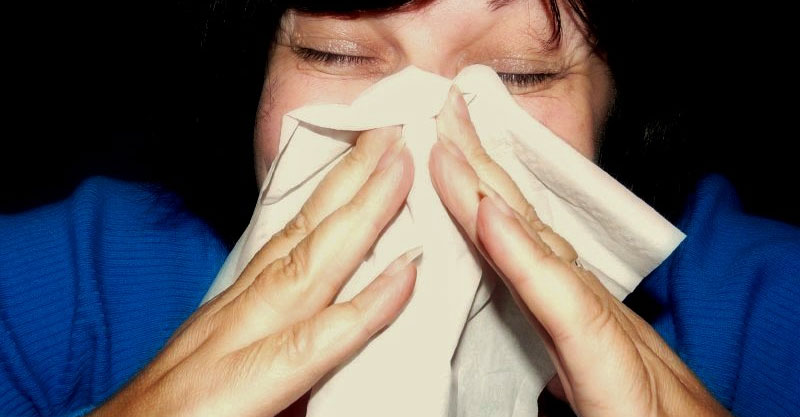“Doctor, I have seasonal allergies. . .”
This is one of the more common issues patients confront at the Allergy Clinic at SUNY Downstate Medical Center’s University Hospital of Brooklyn. Hearing this statement triggers thoughts of the two seasons most associated with respiratory allergic disease – Spring and Fall. In some respects, Spring allergies are the more prominent of the two allergy seasons. However, there are many patients who become miserable in the Fall when the daylight is lessening and the work and school year are in full stride.
Fall allergy season typically occurs from around Labor Day through late-October/mid-November. Although nearing its end now, many people are still suffering itchy, runny noses and sneezing bouts daily.
What leads to Fall allergies?
During the Fall, the most prominent pollen trigger is ragweed. Weeds are third in line to release their pollen during the growth season, so ragweed pollen counts start rising in mid-August, are at their highest in September and October, and lessen when temperatures drop and we reach the time of the first frost.
In addition to ragweed, mold allergies can play a prominent role in the fall. Outdoor molds feed on rotting vegetation and thrive with humidity. So as the growing season comes to an end and leaves turn color and begin falling off trees, outdoor mold activity increases, including an increase in allergy misery for those unfortunate enough to develop IgE-anti mold mediated allergic disease, such as allergic rhinitis and asthma.
Finally, as people start spending more time indoors as temperature begin to drop, there is increased exposure to indoor allergens, including dust mite, animal dander (including from mice, as they seek warmer housing with dropping temperatures), and cockroach, for those unlucky enough to have these non-rent paying roommates.
Approximately 20 to 30% of the general population has nasal allergies, and about 8% have asthma. At University Hospital of Brooklyn, which serves a large inner city minority population, asthma rates are increased to about 11%. So what to do with fall allergies? Take them seriously. Seasonal nasal allergies can develop into seasonal asthma and can have a profound effect on patients’ lives.
How do I stop this sneezing and coughing?
There are many strategies for dealing with Fall allergies.
- avoid the allergen (the pollen, mold, or dander which causes the allergic symptoms), which had been identified as the trigger to your aches;
- use medication to treat the symptoms and the underlying inflammation and, finally, when all else fails;
- consider allergen immunotherapy (allergy shots) which alter your body’s response to the allergen.
Simple ways to avoid allergens include:
- limiting outdoor exercise in the morning hours, when pollen counts are highest;
- keeping the windows closed;
- change clothes upon arriving home, so as not to track pollen through the house;
- comb or brush your hair and avoid hair gels, which can trap pollen which later gets deposited on pillows. If allergic to mold, limit the time spent outdoors when leaves have fallen.
Runny and itchy noses are one of the biggest issues with allergy suferers. Medications which help control these nasal symptoms include antihistamines, which limit sneezing, itching, and a runny nose (including post nasal drip). Nasal corticosteroid sprays are a mainstay of treatment of nasal allergies – they decrease the swelling and congestion that results from allergic inflammation. Decongestants can be helpful as added therapy to open nasal passages, but can have the unwanted side effect of causing insomnia. When medications and staying away from the allergens are not enough, patients may consider allergy shots, which have been available for 100 years, and is a confirmed method for altering immune responses away from allergic to non-allergic.
Ultimately, learning what we are allergic to and how to treat those Fall allergies can benefit all of us with more healthy immune responses. Then, everyone can spend more time outside enjoying the colors and weather of this special time of year.
Content contributed by:
Rauno Joks, MD – Associate Professor of Clinical Medicine
Clinical Director, Center for Allergy and Asthma Research at SUNY Downstate Medical Center.
Chief and Program Director, Division of Allergy and Immunology





Allergy has been really a terrible thing for me to experience especially during the fall. Thanks for this comprehensive article which mentioned some ways for me to avoid allergens such as changing clothes whenever I arrive home and avoiding products that trap pollen to my skin and hair. I wonder how shots could also help me with this struggle.
My sneazing is not in controla. Daily I have it many times. Does it leads to a big disease.